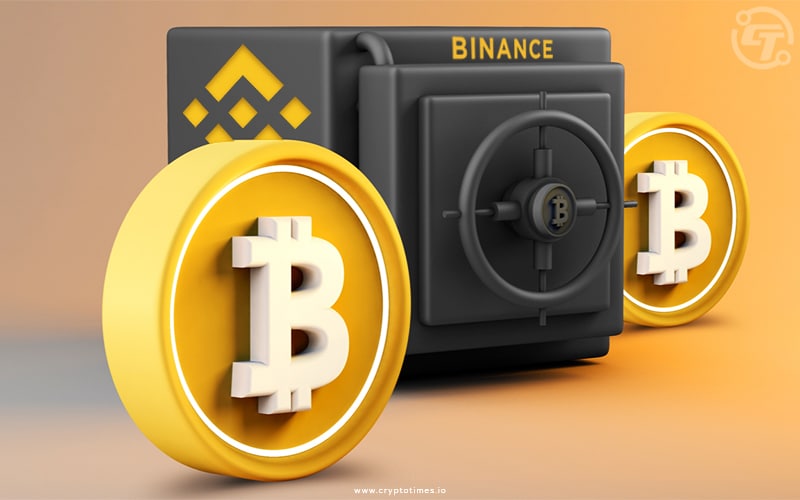Following the abrupt collapse of FTX and a slew of crypto firms, the associated customers and investors lost billions, which do not appear to have fully recovered anytime soon. In response, customers raced to withdraw their funds as the news shook the volatile crypto market. The significant withdrawal volume experienced by some cryptocurrency exchanges within 48 hours is alarming.
This act alone is transparent enough to tell how discouraged many cryptocurrency users became as a result of what transpired between crypto holders and the FTX exchange. However, no exchange wants to have a similar experience, not while holding billions of customer funds.
So how exactly have popular crypto exchanges like Binance responded to this? Is Binance’s proof of reserves (PoR) system a way to manage the condition? Binance has recently launched a new site that explains its proof-of-reserves starting with the Bitcoin reserves.
What Happened to the Transparency Promised in Crypto Space?
The enigma surrounding FTX’s extinction continues to shed light on consequential business secrets that no one ever imagined. This incident posed many questions to crypto holders, including why the assets their account balance displayed could not be accessed.
In the wake of this, there came reports of FTX transferring cryptocurrency worth billions to support its sister trading company earlier before the collapse. This is said to be the cause of FTX’s inability to meet all of its users’ requests for cryptocurrency withdrawals.
So the question is, how did customers’ assets wipe out from their account which FTX so claimed was under its “care”? This has put everyone in utter fear, as it is extremely strange and unfair for a customer to be refused access to funds they kept in a crypto exchange’s custody.
This demonstrates that there is less transparency than previously believed in the cryptocurrency market, which raises the demand for translucency. Customers express their displeasure with the proliferation of cryptocurrencies, which highlights the urgent need for a quick fix to the transparency problem.
Also Read: India’s CoinDCX Launches its Proof-of-Reserves Report
To ensure that the cryptocurrency market retains its credibility, some of the top exchanges have taken some risky actions. By doing this, they will be able to show that they are dedicated to safeguarding customer assets. Most significant cryptocurrency exchanges, like Binance, have complied with the call for transparency made by the crypto community.
Proof of reserves is the primary fix for the issue. By adopting proof of reserves, which it does in a single action, Binance transparently creates the cryptocurrency market. Recently, Bybit began following Binance’s footsteps as the industry called for transparency and it released a Merkle Tree-based proof-of-reserve system.
What, then, is proof of reserves? Read on to find out.
What is Binance Bitcoin Proof of Reserves (PoR)?
A fair report of user assets in reserve—This is the goal of Binance’s open auditing “proof of reserves” (POR) process.
Binance CEO Zhao, also known as CZ, suggested this as a solution to the crypto communities after the FTX collapse. CZ asserts that Binance provides users with an unbiased view of the assets held in reserve by incorporating proof of reserve. However, the company is initially only starting with BTC reserves but will eventually expand its proof-of-reserve offerings. Moreover, It will launch a similar proof-of-reserve report for ETH, USDT, USDC, BUSD, and BNB in the future.
How Does it Work?
The POR is the responsibility of independent auditors. These auditors employ the Merkle tree, a cryptographic technique for condensing big data into a single hash. Every single hash on the Binance exchange is represented as a Merkle root, making it simpler to distinguish between each account.
Users who have logged in can access their Merkle Leaf and Record IDs from the page, select the audit date to check, and then receive confirmation of the audit type. Your Record ID, the assets it covers, and the asset balances on the audit day will all be embedded as a result.
What are the Objectives of Proof of Reserves?
Making the cryptocurrency industry much more transparent is one of the main goals of the proof of reserve. Users can compare their deposits to their balances using POR audits. Other objectives of the POR include the following:
- Users can use it to check that the exchange’s reserve contains their cryptocurrency exchange balances.
- PoR aims to increase user trust, which is already at an all-time low following the FTX scandal.
- To make it more difficult for exchanges to engage in dubious or illegal financial activity with crypto holders’ assets.
- The goal of proof of reserve is to eliminate the possibility that companies will try to get the highest possible yield and other returns from their holdings of customer assets.
- POR shows all deposits made by its users, preventing exchanges from mismanaging users’ assets.
Also Read: Mazars Pauses Proof-of-Reserves Work for Global Crypto Firms
Who Benefits From Proof of Reserves Integration?
Fundamentally, proof of reserves is intended to support traders and cryptocurrency owners alike. The goal of the cryptocurrency industry is to create a decentralized, trustable, open financial system.
However, POR should ideally benefit users and exchanges equally. In the same way that the BitcoinX trading app helps traders when trading, it also helps businesses retain customers by lowering security risks.
Conclusion
Proof reserves give exchanges a way to inform customers of what is happening to their funds behind the scenes. This will make the crypto space more reliable and trustworthy.






